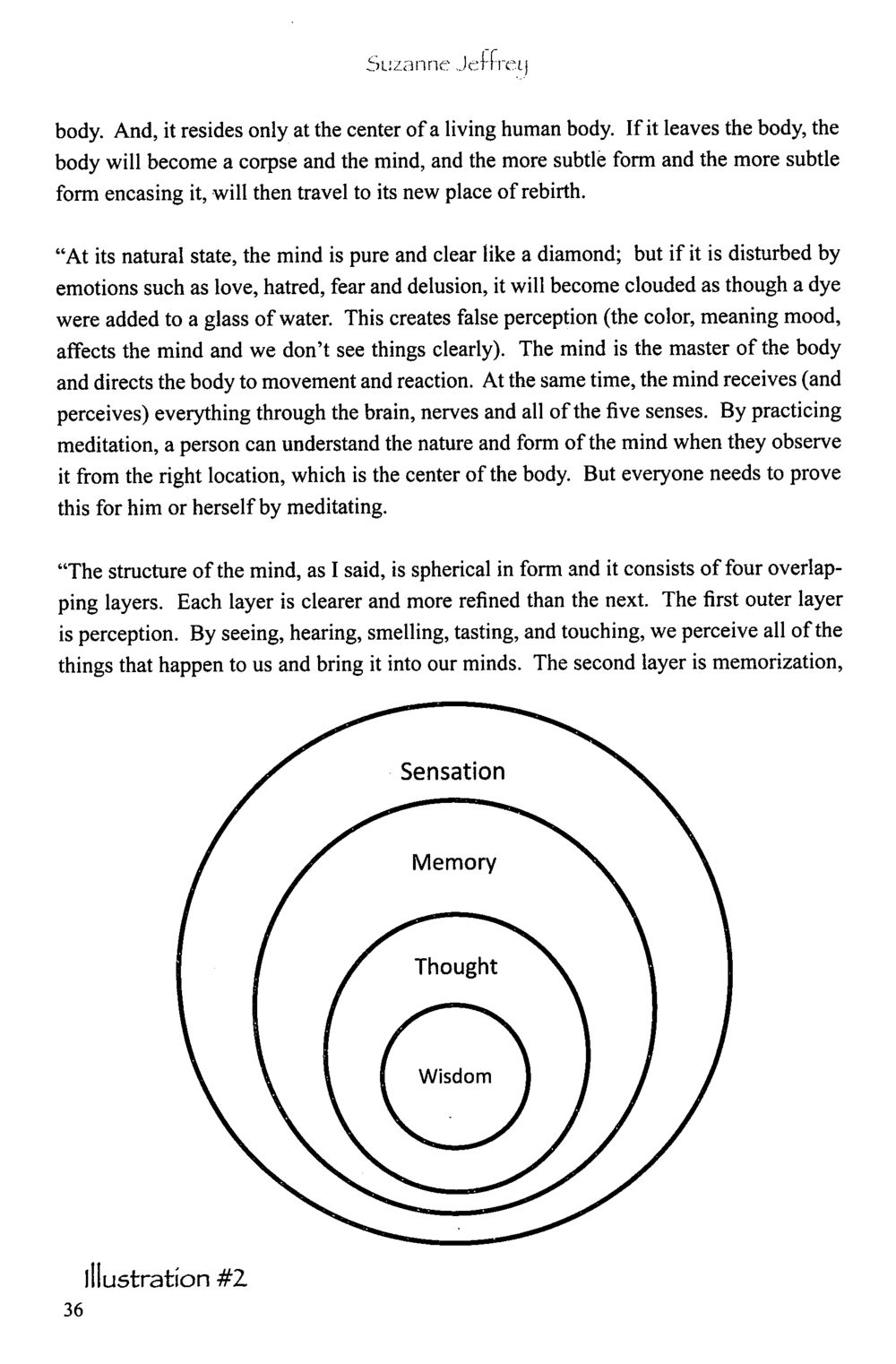Understanding the Nature of the Mind : หน้า 41/164
The Meeting with a Dhamma Master : หน้า 41/164 Explore the intricate structure of the mind, its relationship with the body, and the transformative power of meditation.
0 ครั้ง

สรุปเนื้อหา
This text delves into the nature of the mind, explaining its pure and clear state when unclouded by emotions like love and anger. It describes the mind's role as the master of the body, directing actions and perceiving reality through the senses. The text emphasizes the importance of meditation to gain insight into the mind's structure, which has four overlapping layers: perception, memorization, and more. Each layer is more refined, guiding individuals to understand their mind's nature more clearly, offering a path toward clarity and self-realization. For more details, visit dmc.tv.
หัวข้อประเด็น
-Nature of the mind
-Role of meditation
-Emotional disturbances
-Structure of the mind
-Layers of perception
ข้อความต้นฉบับในหน้า
Suzanne Jeffrey
body. And, it resides only at the center of a living human body. If it leaves the body, the
body will become a corpse and the mind, and the more subtle form and the more subtle
form encasing it, will then travel to its new place of rebirth.
"At its natural state, the mind is pure and clear like a diamond; but if it is disturbed by
emotions such as love, hatred, fear and delusion, it will become clouded as though a dye
were added to a glass of water. This creates false perception (the color, meaning mood,
affects the mind and we don’t see things clearly). The mind is the master of the body
and directs the body to movement and reaction. At the same time, the mind receives (and
perceives) everything through the brain, nerves and all of the five senses. By practicing
meditation, a person can understand the nature and form of the mind when they observe
it from the right location, which is the center of the body. But everyone needs to prove
this for him or herself by meditating.
"The structure of the mind, as I said, is spherical in form and it consists of four overlapping layers. Each layer is clearer and more refined than the next. The first outer layer
is perception. By seeing, hearing, smelling, tasting, and touching, we perceive all of the
things that happen to us and bring it into our minds. The second layer is memorization,
Illustration #2
36
Tags : #mind #meditation #perception #emotions #rebirth
หน้าหนังสือทั้งหมด

1

2

3

4

5

6

7

8

9

10

11

12

13

14

15

16

17

18

19

20

21

22

23

24

25

26

27

28

29

30

31

32

33

34

35

36

37

38

39

40

41

42

43

44

45

46

47

48

49

50

51

52

53

54

55

56

57

58

59

60

61

62

63

64

65

66

67

68

69

70

71

72

73

74

75

76

77

78

79

80

81

82

83

84

85

86

87

88

89

90

91

92

93

94

95

96

97

98

99

100

101

102

103

104

105

106

107

108

109

110

111

112

113

114

115

116

117

118

119

120

121

122

123

124

125

126

127

128

129

130

131

132

133

134

135

136

137

138

139

140

141

142

143

144

145

146

147

148

149

150

151

152

153

154

155

156

157

158

159

160

161

162

163

164
หนังสือที่เกี่ยวข้อง
Load More
